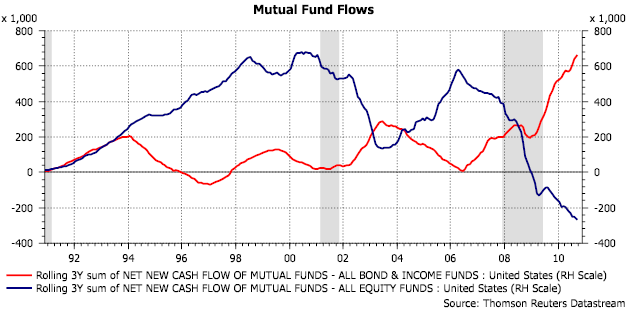The Mystery Alphabet of Mutual Fund Expenses Explained
Post on: 20 Июль, 2015 No Comment

www.HeritageFinancialPlanning.com ) Discusses the ABCs of Mutual Fund Expenses.
The alphabet soup of mutual fund share classes can be confusing and expensive. Investors must understand the fees and expenses associated with their mutual funds because these have a real and permanent impact on return.
Grapevine, TX (PRWEB) July 14, 2011
Paul R. Streiber, M.B.A. CFP, financial planner and wealth manager, with Heritage Financial Planning in Grapevine, Texas, often hears from clients who wonder what that letter (A, B, or C) in their mutual fund name means. If you’ve been curious about that same thing, read on.
If your mutual fund has the letter A, B or C following its name, then chances are you have bought a “load” or commission based mutual fund. There are a number of ways to structure the commissions on mutual funds, and the key to determining the method you are paying for is to understand what that A, B or C means.
An A-share mutual fund has a commission that is subtracted out of your investment account as soon as you purchase shares of the fund. On average, A-share mutual fund commissions start at around 4.5% (fixed income funds) and increase to about 5.75% (equity funds) of the dollars you invest in these funds. One advantage to buying A-share funds is that you often get a volume discount, lnow as “breakpoints.” If you are investing more than $50,000 (some funds give you a discount beginning at $25,000), the percentage you pay in commissions is discounted. For example, if you were purchasing $100,000 of a fund’s class A shares, then based on a discounted commission rate of 4.0%, approximately $4,000 would be deducted from your account immediately.
A B-share mutual fund is also a “load” fund and is generally more expensive than A shares, though is more difficult to determine the actual commission costs. Often referred to as a “back-end load fund,” the purchase of B-share mutual funds does not result in an immediate withdrawal of commissions from your account; rather these costs are spread out and recouped over a period of years (typically seven) by charging shareholders higher annual expense rates to repay the mutual fund company for the commission it pays upfront. If a B-share fund is sold within the seven-year initial holding period, typically a surrender charge will be subtracted out of the account to recover any remaining unpaid commission.
Some C-share mutual funds are referred to as “level load” shares, meaning that a portion of their commission rate is charged every year; however the mutual fund company does not levy a surrender charge after the first year because these shares pay their commissions at a rate of approximately 1% per year.
One disadvantage of B-share and C-share funds is that they do not offer the same volume discount that A-share funds offer, which means that B-share and C-share funds are often more expensive than A-share funds, particularly when investing more than $50,000.
Which class of mutual fund shares is best? Truth be told, there is no clear-cut answer to this question. Some brokers will argue the virtues of the various commission structures, while others will argue that no-load investing (commission free) is best. It’s critical however to at least understand what’s being charged and how the commission is paid on the mutual funds you purchase and own because these commissions (fees) permanently reduce your returns.
The more important lesson is that expenses are a vital piece of the investment decision-making process. But looking at expenses in isolation does not make for a sound investment decision – just as important are an individual’s risk tolerance, time horizon and financial objectives. Considered along with the issue of expenses, these factors combine to help investors make the best possible decision when it comes to portfolio allocation and security selection.
Paul R. Streiber, M.B.A. CFP, is a financial planner and wealth manager, with Heritage Financial Planning in Grapevine, Texas, serving a select group of clients who require objective, fee-only comprehensive financial planning and wealth management, including retirement planning, investment management, estate planning, education planning and risk management. Streiber’s professional experience includes many years in various aspects of financial services, including personal finance, banking, and corporate finance. Prior to passing the 10-hour, two-day long CFP certification examination, Streiber earned a Certificate in Financial Planning from the University of North Texas, a M.B.A. in Finance from the Simon Graduate School of Business at the University of Rochester and a B.A. in Economics from Drew University.
About Heritage Financial Planning
www.HeritageFinancialPlanning.com.
The registered and trade marks in the press release identify those individuals who have met the rigorous experience and ethical requirements of the CFP Board, have successfully completed financial planning coursework and have passed the CFP Certification Examination covering the following areas: the financial planning process, risk management, investments, tax planning and management, retirement and employee benefits, and estate planning. CFP certificants also agree to meet ongoing continuing education requirements and to uphold CFP Board’s Code of Ethics and Professional Responsibility, Rules of Conduct and Financial Planning Practice Standards.














